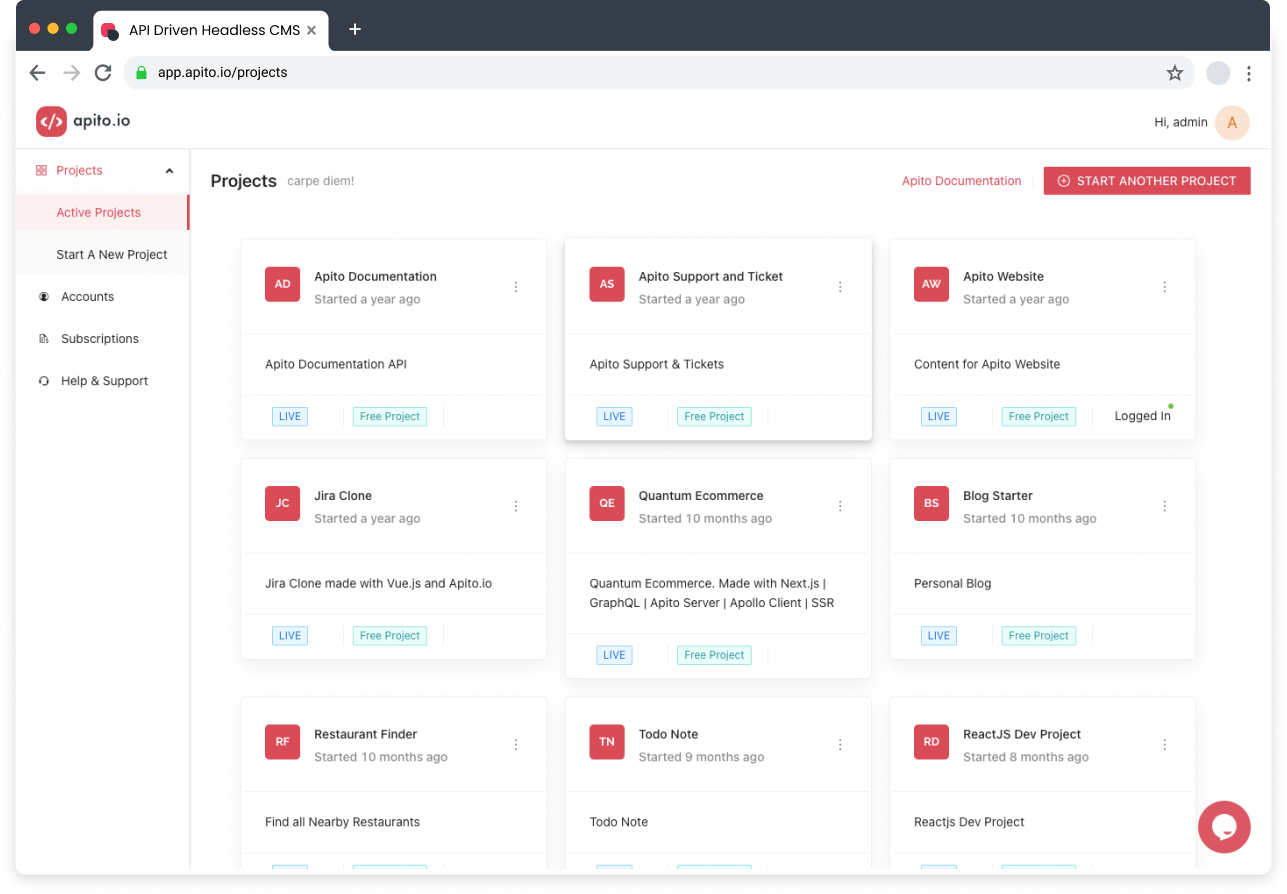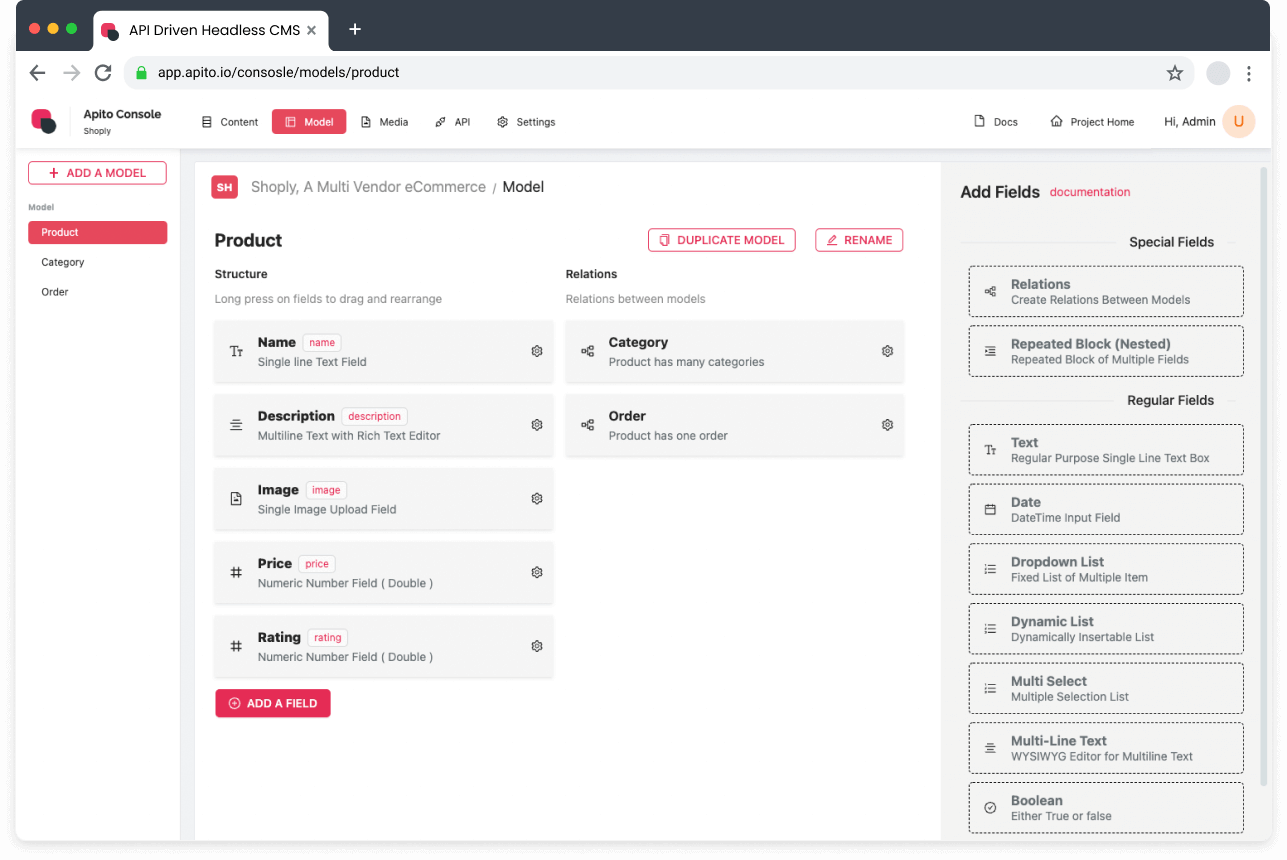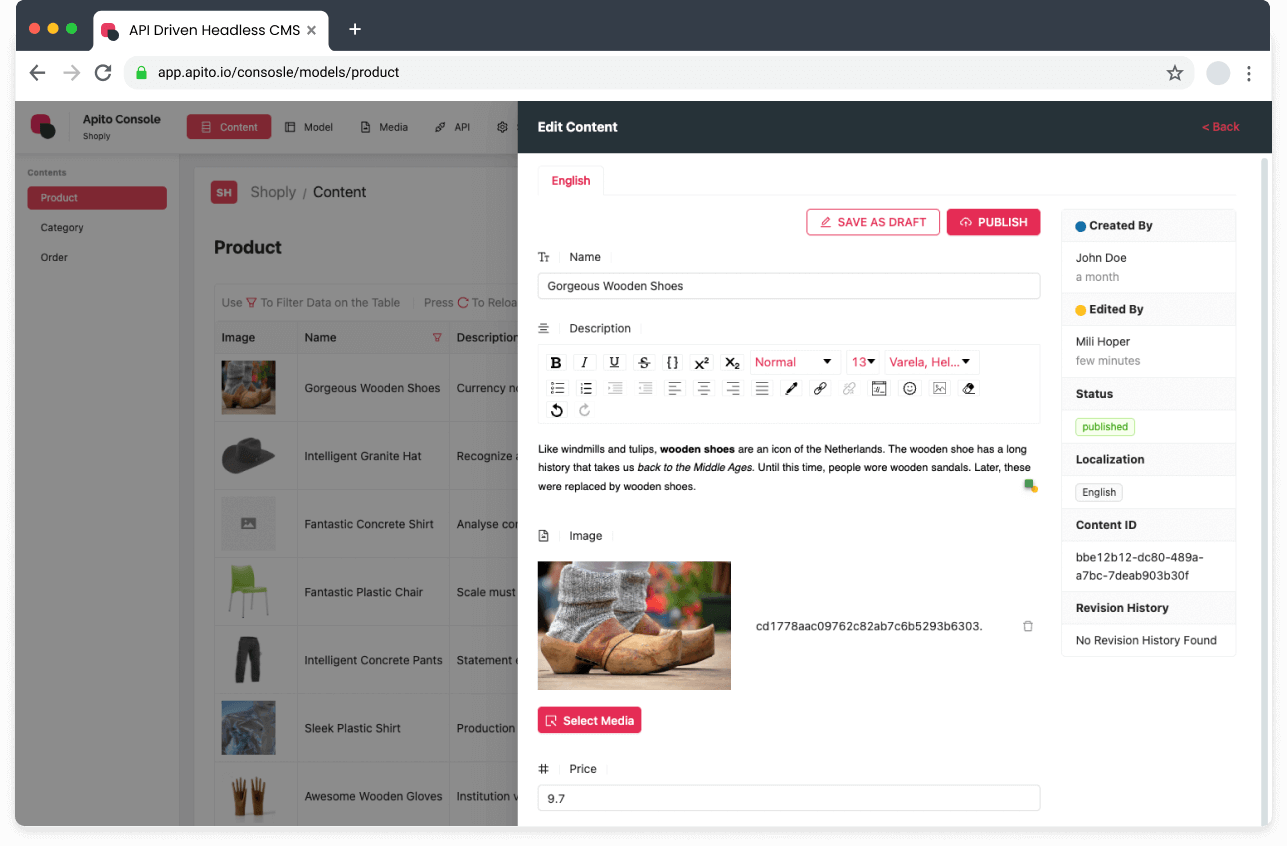Menu
Apito
- Home page
- https://apito.io/
- @apito_io
- Type:
- API Driven
- Supported Site Generators:
- All




Apito is a powerful Headless CMS on the cloud which helps you build APIs quickly. You can think of it as a firebase or WordPress alternative.
What makes Apito so powerful?
Apito offers APIs over a modeling Apito will be able to connect to several popular choices of databases, including PostgreSQL, MySQL, MariaDB, MongoDB, and ArangoDB. That is a topic of another discussion.
To summarize our points, Apito has many advantages, including
- Easy Learning Curve
- Versatile Database Modeling
- A Robust Content Management System
- Complex Query and Filtering
- Role-based Permissions
- Build-In Support for Multilingual Content
- Instant GraphQL & REST API Endpoints
- Webhooks
- Authentication Module
- Cloud Functions
1. Query Engine
Querying and filtering your data is very difficult with traditional headless CMS, and most of the time you are restricted to basic CRUD queries, whereas with Apito you can execute bulk queries with complex filters (even geospatial queries). Also, once an application is in production, you will need to write complex queries, especially for the purpose of analytics or business intelligence.
2. Database Design
The Apito Console has a versatile model builder. It supports various fields to model and structure your project. For example, Single Line Text Field, Date Field, Number Field, Fields within Fields ( Array of Objects), and the most important feature is the relationship between models ( One-to-One, One-to-Many, Many-to-Many ).
3. Role-based Permissions
On Apito, you can specify granular permissions based on roles. That can be attached to any API endpoints & models.
Apito roles and permission systems are very versatile. Roles are a very important part of your API. It controls how your API will operate. Since your API Secrets depend on Roles you have to be careful while creating your roles. Read more here.
4. Dual Engine (GraphQL or RESTful API)
Today, almost all apps are data-driven. Making sure a developer has access to the data they need when they need it, and as they need it, is super important. For the past decade, REST has been the API standard. While the world has benefited hugely from REST, it has some limitations.
GraphQL, on the other hand, comes with some huge advantages when compared to REST. A single endpoint can support any query or mutation (a.k.a. update).
Queries get defined on the client-side, meaning no more endpoint updates are done by backend developers. Queries only return the data that the developer wants. Other solutions let users build either GraphQL or REST endpoints, but with Apito you get both!
5. Cloud Function Support
Apito is very extensible. You can extend your API or write your own endpoint on Apito using custom functions that can hold your custom logic and integration.
So far, Apito generates all the CRUD(Create, Read, Update, Delete) API instantly based on your model, but what happens when you need to make a custom request, need to execute business logic, or need to connect to any third-party API?
Currently, Apito will connect your Apito Functions to your AWS Lambda Functions. Each function you create here should be connected to a separate AWS Lambda function in order to operate.
A Back-end for SaaS Apps
Apito, that's pretty different. Apito has designed its platform to best accommodate SaaS apps from day one; with a GraphQL API for any web client, or mobile, to consume. This naturally makes it ideal for developers looking for a backend-as-a-service for any SaaS project. Why? because things like authorization, multi-tenancy, user administration, and a relational schema builder are all native to the platform.
Conclusion
Apito gives developers a back-end they need when building modern apps, the way that they would have wanted to build it themselves. By configuring dozens of clutch back-end resources and offering them as a production-ready platform, you can easily write your project-specific business logic with cloud functions.
Find more headless content management systems.